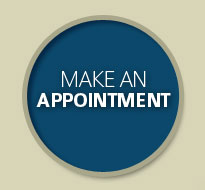At Advanced Eye Centers, Inc. we offer our patients the most current advances in contact lens technology. Our Optometrists provide precise fitting of contact lenses to accommodate even the most difficult prescriptions. We specialize in Multi-Focal, Daily Disposable, Silicone Hydrogel and even specialty contact lenses for our Keratoconus patients. Contact lenses can often be fit and dispensed for our patients on their initial visit with us. Our trained staff will provide information on proper use and care of your new lenses!
Fact vs. Fiction
You might not even feel your contacts while you are wearing them.
Fact. Soft contact lenses are comfortable, easy to wear and require just minutes to get used to. In fact, many people say ACUVUE® OASYS® brand contact lenses, which Advanced Eye Centers, Inc. carries stock of in office, feel almost like wearing nothing at all.
Contact lenses can get fused to your eye!
Fiction. In the vast majority of cases, contact lenses are easily removed using the method your doctor recommended. Contact lenses can always be removed with a little patience.
Contact lenses are a hassle to take care of.
Fiction. Contacts are simple and nearly hassle-free. Today’s soft lenses generally require just one type of solution to rub, rinse and store your lenses. Even if this level of daily cleaning and storage is too much for you, there are other options. Daily disposable lenses are worn for a day then tossed away.
Contacts can pop out of your eye at anytime and get lost!
Mostly Fiction. With proper selection and fitting, lenses should stay in place almost all the time. Even on that rare occasion when a soft contact lens moves out of place, most often it stays on your eye until you can move it back.
It is OK for pre-teens to wear contact lenses.
Fact. Lots of teens, pre-teens included, wear contact lenses. The average age teens first get contacts is 13. Our optometrists will fit patients ages 12 and up. Patients under the age of 12 at the joint discretion of the parent and the provider. Successful lens wear depends more on the responsibility and attitude than age; your eye doctor will help determine if your child is a candidate for contact lenses.
People over 40 shouldn’t wear contacts.
Fiction. People of all ages wear contact lenses, including many older adults, thanks to bifocal, multifocal contact lenses and regular contacts for those with monovision. Even as eyes become dryer as people age, next generation contact lens materials can provide better all-day comfort than ever before.
If you have astigmatism, contact lenses won’t work for you.
Fiction. People with astigmatism can enjoy all the freedom and benefits of contact lenses. There are brands of contact lenses for ASTIGMATISM that can help to naturally align your lenses every time you blink, for exceptional comfort.
Contact lenses can make nearsighted eye worse for kids.
Fiction. Studies have shown that contact lens wearers had no greater myopic progression (increase in nearsightedness) than those wearing glasses.
I only need my glasses when I drive.
Fiction. If you need vision correction to drive, you’ll certainly benefit from having the same clear vision for other activities. And if your need for vision correction isn’t that strong, there are lenses that can provide the flexibility and freedom to do what you want, when you want, with exceptional comfort and crisp vision. Plus, contacts won’t smudge, steam up, fall off or break, and you won’t lose any peripheral (side) vision – unlike eyeglasses.
ATTENTION CONTACT LENS WEARERS
Listed below are the fees that our office charges for a contact lens fitting and other assessment fees.
NEW CONTACT LENS FIT $110.00
This includes initial fitting, trial lenses and supplies, training to handle the lenses, and two follow up visits if necessary. Any additional follow up visits: $35.00 per visit.
CONTACT LENS YEARLY ASSESSMENT FEE $45.00
This includes an evaluation of your current lenses to assure that they are still fitting properly and to obtain an updated contact lens prescription. This fee includes 2 follow up visits if necessary. Any additional follow up visits: $35.00 per visit.
REGULAR REFIT $75.00
If you are currently unhappy with your lenses and wish to change them you will charged a refit fee. This includes 2 follow up visits if necessary. Any additional follow up visits: $35.00 per visit.
SPECIALTY LENSES INITIAL FITTING $1,000
Specialty lenses include: Rigid Gas Permeable (RGPs), Hybrid and Scleral lenses. This includes initial fitting lenses, and all follow up appointments.
To order Contact Lenses online, please visit:









